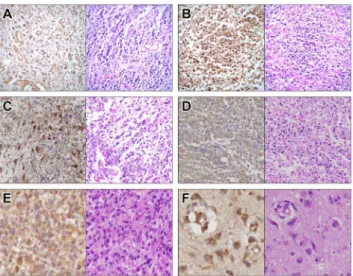Identification of molecular pathways facilitating glioma cell invasion in situ.
Texto
Imagem




Documentos relacionados
Different properties of glioma cell proliferation and clearance are associated with distinct glioma ECM components; in 20-day gliomas, ECM compo- nents such as chondroitin
All patients showed pure cerebellar ataxia without epilepsy, suggesting a differ- ent phenotype of the SCA 10 mutation in Brazilian fam- ilies, when compared to their
In U373 glioblastoma cells undergoing cisplatin treatment, several genes were modulated, including those encoding proteins involved in transcriptional regulation, stress
In this study, we established a tumor invasion model by using zebrafish embryo xenografted with human glioblastoma cell line U87 and its derived cancer stem cells (CSCs).. We found
Methodology/Principal Findings: In order to study the mechanisms by which migration of glioma cells can be inhibited by the upregulation of the PTEN gene, we studied two glioma
These preliminary results suggest that the immune response in patients with malignant glioma is seriously disregulated. The rapid clinical deterioration, relapses and high
In this study, by ectopic expression of OCT4B in SiHa cells we demonstrated that OCT4B promoted cervical cancer cell proliferation and xenograft growth, and inhibited cell
To analyze the activation of Pyk2 in glioma cells in response to soluble factors released by microglia we investigated GL261 murine glioma cells, C6 rat glioma cells, and